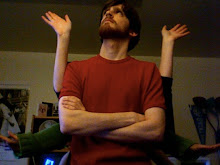As I hope these examples have shown, appropriation in art cannot be labeled as either wholly ethical or wholly unethical. After all, appropriation of one sort or another has led to revolutionary and changes in the Western conception of art in several ways, so it is irresponsible to ignore its cultural importance. There are, of course, unethical ways of appropriating art. Direct plagiarism – passing off another person’s creation as your own – is generally agreed to be reprehensible. There are also instances of one culture disrespectfully using another’s art for their own profit, such as Picasso’s refusal to acknowledge his African influences. Even appropriation within a single culture can be a dishonor to the original source, such as the totem pole imagery used in some Native American casinos. This does not change the fact that appropriation can be done respectfully and without infringing on the rights or traditions of others. Intent is a crucial element in determining the morality of appropriation. When people like Warhol and Prince alter an existing photo, they make no effort to pass off the photo as their own - they simply want to use it as raw material for sending a message. The Impressionists were not trying to replace Japanese art with their own, but instead to expand their artistic vision. In The Secret of Kells, Tomm Moore takes much from the Book of Kells and rewrites its history, but does so out of respect for the book’s importance to art and his cultural heritage. If I take a photograph of graffiti in an alley, I am in no way trying to tell people that I can create interesting art with a spray can; I am merely showing them what interests me in the juxtaposition of beauty and grittiness in the urban environment. In most of the examples analyzed in this paper, my judgment is that the appropriators were not trying to steal another’s art, or to become rich and successful without doing any work. They saw someone else’s art and believed that they could do something new, inspired, important, and unique with it. The poet Audre Lord once said “There are no new ideas. There are only new ways of making them felt.” The quote may be somewhat cynical, but I believe it lends credence to the idea that appropriation can be an acceptable way of expanding one’s artistic sphere. Much of the artistic appropriation seen in recent history can be attributed to this idea. So, if an artist takes his cues from an existing piece of art, or the art of another culture, or that of his own culture, we as viewers should consider his treatment of that original before condemning him.
* * *
...And that's my senior project! The essay part of it, at least. Looking back on it, even just a few weeks later, I can see things I want to change - like the implication that the Seven Cedars Casino and The Secret of Kells are indicative of the entire Native American and Irish cultures' take on appropriation. But...ah well, I wanted to post it in its natural state. Hope you enjoyed it!
Bibliography after the jump, if you're at all curious!
African Art: The World Bank Collection. Ed. Alexandre Marc. Washington D.C.
“Avatar: The Last Airbender.” Internet Movie Database. http://www.imdb.com/title/tt0417299/.
“Limitations on Exclusive Rights: Fair Use.” In Legal Information Institute. Cornell University Law School
“Samurai Jack.” Internet Movie Database. http://www.imdb.com/title/tt0278238/.
Seven Cedars Resort Splash Page. http://www.7cedarsresort.com/. 2009.
Bourdon, David. “Andy Warhol and the American Dream.” Andy Warhol: 1928-1987. Ed. Jacob Baal-Teshuva. Munich
Bynum, Aaron H. “’Brendan and the Secret of Kells’ Animation Film at Annecy
Danto, Arthur Coleman. Beyond the Brillo Box: The Visual Arts in Post-Historical Perspective. Berkeley : University of California
Department of Photographs. "Daguerre (1787–1851) and the Invention of Photography". In Heilbrunn Timeline of Art History. New York : The Metropolitan Museum
Dennison, Lisa. “Preface.” Richard Prince. Ed. Nancy Spector. New York : Guggenheim Museum
Ebiri, Bilge. “The Secret of Kells Director Tomm Moore on His Surprise Oscar Nomination.” New York
Glozer, Laszlo. “A Guest Performance on the Painters’ Olympus .” Andy Warhol: Art from Art. Ed. Jörg Schellmann. Cologne
Hackin, J.; Couchoud, Paul Louis. Asiatic Mythology 1932. Whitefish: Kessinger Publishing, 2005.
Kennedy, Randy. “If the Copy Is an Artwork, Then What is the Original?” New York Times. 6 Dec. 2007.
Lambourne, Lionel. Japonisme: Cultural Crossings between Japan London
Napier, Susan Jolliffe. From Impressionism to anime: Japan as fantasy and fan cult in the mind of the West. New York
Napier, Susan Jolliffe. Anime: From Akira to Howl’s Moving Castle. New York
Spector, Nancy. “Nowhere Man.” Richard Prince. Ed. Nancy Spector. New York : Guggenheim Museum
Stewart, Hilary. Looking at Totem Poles. Seattle : University of Washington
Sullivan, Sir Edward. The Book of Kells. London
Tait, Norman. “Foreword.” Looking at Totem Poles. By Hilary Stewart. Seattle : University of Washington


I like it a lot, Patrick. You did a good job. Did Hannum get your eval up?
ReplyDeleteAlso, read this: http://www.nytimes.com/2010/05/28/arts/design/28gagosian.html?ref=arts
ReplyDelete